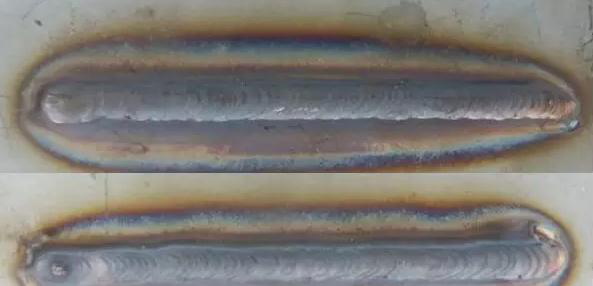Kettle welding has changed from traditional argon arc welding to today's laser welding. Careful friends will definitely find that the current electric heating manufacturing process, especially the surface smoothness, the welding transition interface is smoother than the electric kettle used before, and even sometimes mistakenly It is believed that it is integrally formed. In fact, it is impossible for the electric heating shell to be integrally formed. From a production point of view, integral forming is a waste of material and is not recommended. Even if some 3D laser printing is used now, The electric heating shell will not be integrally formed, so laser welding has become the best processing equipment for welding various components of the electric heating shell.
Among the many hardware daily necessities, today we will explain to you the laser welding process of stainless steel pots.

An ordinary stainless steel kettle consists of five parts: the spout, the lid, the handle, the body, and the bottom, as shown in the figure. Before we saw the bright and beautiful kettle, there were as many as ten production processes. After being processed and cut from an ordinary stainless steel plate, it was trimmed and stamped into the desired shape, and then welded and polished. Clean packaging.
There are two methods for traditional kettle welding, one is argon arc welding and the other is resistance welding (butt welding).
Generally, the spout and the handle of the pot are resistance welded, the bottom and body of the pot and the lid of the pot are welded by argon arc welding, as shown in the figure, before the laser welding, this is almost the whole welding process, before there is no good fixture matching , Welding technicians have become the most sought-after laborers in the industry. The quality of the welded products is determined by the skill of the welding master. The level of production capacity is also inseparable from the craftsmen. When an enterprise often relies on manual production, it is destined to be eliminated and unable to keep up with the pace of the market.
The thickness of ordinary daily stainless steel kettle materials will not exceed 2mm. Commonly used materials of 0.8-1.5mm are generally used for cost reasons. Some stretched positions will lead to thinner ones. The disadvantage of argon arc welding is that due to the large heat affected area, the workpiece often causes deformation, hardness reduction, blisters, local annealing, cracking, pinholes, wear, scratches, undercuts, or insufficient bonding force and internal stress after welding. damage, etc. Also because the welding heat is too large, it will also damage the human body. Although there is argon gas protection during welding to prevent oxidation of the welding position, the uncontrollable welding heat, the excessive welding spot, and the deformation of the pot itself will bring more difficulties to the subsequent polishing process, so the defect rate will also follow. Increase.

Weld spot
With the emergence of laser welding machines, the advantages of laser welding for thinner materials have become increasingly prominent, and the control of welding heat and welding spot can be set as required. Let's talk about the automatic welding of stainless steel pots if a fiber laser welding machine is used.
The fiber laser welding machine uses the energy fiber to transmit the laser generated by the solid laser into the fiber through the laser coupling technology, and then the laser in the fiber is applied to the surface of the workpiece through the output mirror to achieve the purpose of welding. Using the fiber to transmit the laser, the flexibility of the fiber can be used, so that the laser can process the workpiece at any angle, realizing multi-dimensional flexible processing. The optical fiber also has a homogenizing effect on the laser energy, which can output the laser spot energy according to the fake shape, and homogenize the laser, so that the quality of the outgoing laser beam is better and the welding quality is improved. Using the energy feedback power supply to output energy laser can achieve consistent welding spot.
.png)
Because of the small heat-affected area of laser welding, the welding of thin materials (0.1-2.0mm) will not deform, the welding spot is uniform, and the polishing process is reduced, which can greatly reduce the defective rate of finished products. The optical fiber flexible connection cooperates with the four-axis and six-axis manipulators and the kettle tooling fixture, which can more automatically complete the welding process. And a vision system can be added to automatically capture the welding seam, making the welding more intelligent and no longer relying on manual welding technology.


 Language
Language  中文简体
中文简体 English
English


 Address:A No.13 Twenty-third Road, South Economic and Technological Development Zone, Shenyang City, Liaoning Province.
Address:A No.13 Twenty-third Road, South Economic and Technological Development Zone, Shenyang City, Liaoning Province. Phone:13898848281
Phone:13898848281 Landline:024-25799905
Landline:024-25799905 Fax:024-25799905
Fax:024-25799905 E-mail:jyjg2018@163.com
E-mail:jyjg2018@163.com